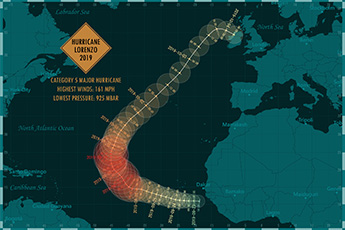In September 2019, meteorologists tracked Hurricane Lorenzo — the easternmost Category 5 hurricane ever recorded — as it shifted courses and defied expectations across the Atlantic, testing the adaptability of responders and forecasters alike. Lorenzo’s unpredictable path underscored just how quickly conditions can change, and why agility is essential for anyone charting a course through uncertainty. The economic landscape this fall demands similar navigational skills from community financial institutions (CFIs): as the FOMC adjusts rates, inflation remains stubborn, policy winds shift, and home prices change course, CFIs must adapt on the fly. Success in this environment depends on steady risk management, clear-eyed strategy, and the readiness to reroute when data or conditions demand it.Banking SectorAs the quarter advances, CFIs are focusing closely on deposit costs and liquidity. Lower federal funds rates have helped keep funding pressures in check, but market competition for core deposits continues to intensify. While there has been a slight uptick in consumer delinquency rates among lower-tier borrowers, repayment rates and general credit quality are still sound. Relaxed regulations for mergers and acquisitions are continuing to encourage institutions to pursue growth opportunities or partnerships. By mid-September, deposit balances for smaller, domestically chartered banks were up YoY, a sign of continued sector resilience in a complex environment.Housing and Consumer Trends: Gradual AdjustmentAugust’s housing data shows building permits and starts moving lower, both monthly and annually. This slower pace is also reflected in completions and existing-home sales — activity there dropped 0.2% for the month, but still rose 1.8% over last year. Regional home price appreciation continues, though more gradually, and the average 30Y mortgage rate declined to 6.34% in late September. Inventory is creeping up, and homes are spending more time on the market, making selective portfolio management important for community institutions.FOMC, Rate Cuts, and What’s Next from the FedAt its September meeting, the FOMC cut the target range for the federal funds rate by 0.25% — now 4.00% to 4.25% — citing concerns about persistent, but easing, inflation and a softer labor market. The decision was not unanimous, reflecting internal debate over the pace and extent of future cuts. Back-to-back rate decisions this year have signaled a shift away from last year’s “higher for longer” stance. In its latest statement, the Fed noted that while inflation is moderating from its highs, it remains above the committee’s 2% target, justifying further gradual policy easing. Market watchers expect another rate cut at the next meeting, though the government shutdown is likely to make decision-making more difficult by delaying key data releases. Policymakers have emphasized that any future moves will hinge on how inflation and the broader economy behave over the next few months. Chairman Jerome Powell again stressed the importance of finding the right balance between containing inflation and supporting full employment, especially with the current environment evolving rapidly.
Key Takeaways for CFI Leaders
Key Takeaways for CFI Leaders
- Manage deposit pricing and retention with a close eye on local market dynamics.
- Continue technology upgrades to drive profitable deposit and loan growth.
- Closely monitor credit quality and early signs of softening — especially in consumer portfolios.
- Adjust portfolio and liquidity strategies proactively as rates, consumer behavior, and regulatory signals shift.
- Stay informed on policy developments, especially as the government shutdown and FOMC actions may alter forecasts sooner than expected.
Looking AheadCFIs have shown remarkable resilience as the economic environment keeps shifting. Even with continued inflation and the complications from the government shutdown, a local focus and clear communication — with both staff and customers — will be critical as we move into the next quarter. Prudent management, flexibility, and ongoing engagement with emerging policy updates are likely to set successful leaders apart. Staying ready to adjust as new data arrives will help institutions support their communities in the months ahead.




